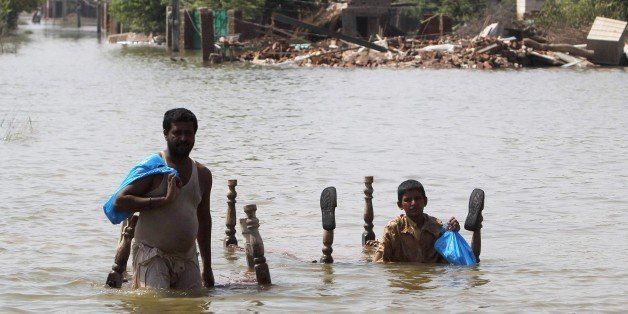
NEW DELHI -- The subtropical Indian subcontinent has a very long human history and a very large human population, both sustained by a peculiar climate phenomenon called the "monsoon." It is well understood that human economy is a wholly owned subsidiary of the planetary climate, and this is completely true of India's with respect to the monsoon. Recent findings of the IPCC on the changing global climate and on its present/potential impacts are of serious global concern.
Our earth was supposed to have been a "Garden of Eden" and has been made a "Lost Paradise" in the past one hundred years through climate change, largely due to human economic activities. Earth scientists know that the response of geographic regions differ significantly even to large scale earth processes. Although global data was used by the IPCC, it is important to know how the old and most populous India has been responding to the changing global climate.
India is under the grip of fever. From the mid-1970s, the duration and intensity of heat wave conditions show a positive trend, a consequence of global warming. As is expected, there is large geographic variability in the extent of warming due both to natural and cultural causes.
Among the several man-made factors, emission of green house gases (GHG), particularly CO2, has been found to be a major cause of the observed warming. Between pre-industrial era (before 1750 AD) and now, the atmospheric CO2 content has gone up from ~280 ppm (parts per million) to 400 ppm globally. In global warming, India is well integrated with the world because atmosphere has neither geographic nor political boundaries.
India's monsoons bring about 90 percent of its annual rainfall. This is the most important gift of nature to India. It is also a regularly irregular phenomenon -- regular in terms of its occurrence, in the months of June, July, August and September every year and irregular in regional, temporal and intensity of precipitation during the four monsoon months. The phenomenon occurs regularly because of the huge Tibetan plateau and the transit of the Sun from the tropic of Capricorn (south) to the tropic of Cancer. Precipitation pattern is irregular because the phenomenon is also influenced by various global oceanic and atmospheric circulations.
In the present warming scenario, increased monsoon rainfall has been projected by various models. Extreme rainfall events are causing an increase in the frequency and intensity of large floods in major Indian rivers. Adverse impacts of global warming, through changes in the atmospheric and oceanic circulations, on the monsoon rainfall have become tragically apparent in recent years.
For the Himalayan latitudinal range, glaciers form at altitudes above 3,500 m from moisture supplied by the winter Westerlies and the summer Monsoon winds. The mountains are still tectonically active with regions of high heat flow from below. A large part of the estimated aerial extent of glaciers, their volume and mass, and ablation and melting are satellite-based with little ground truth above 5000 m. Therefore, the uncertainty level of estimated total glacial mass and the loss due to melting and due to mass wasting is very high.
Nevertheless, the available data suggest that a very large part of the glaciers are stable. Some Western Himalayas show growth, and some in the central and eastern parts show a net loss. Overall, for a very large Indian part of the glaciers, a nearly 13 percent area loss for the past 4-5 decades has been estimated.
More than 60 percent of the Indian population depends on agriculture. Increasing temperature (especially winter minimum), atmospheric CO2 and extreme rainfall events, all have adverse impacts on crop yield, especially wheat productivity -- one of the two major staple grains in India and thus an issue of major concern for India. Added to this is the projected loss of fertile farmland on coastal regions by rising sea level.
If climate change could be attributed to technology, the same technology is also facilitating slow and steady human migration. Just as the little Ice Ages in Europe forced Europeans to migrate to America, Australia and Asia, the present Green House Earth is doing the same to my fellow Indians. New technology will hopefully emerge out of this human migration to deal with problems of old technology. In the meantime, we must take a second look at our notion of "development."